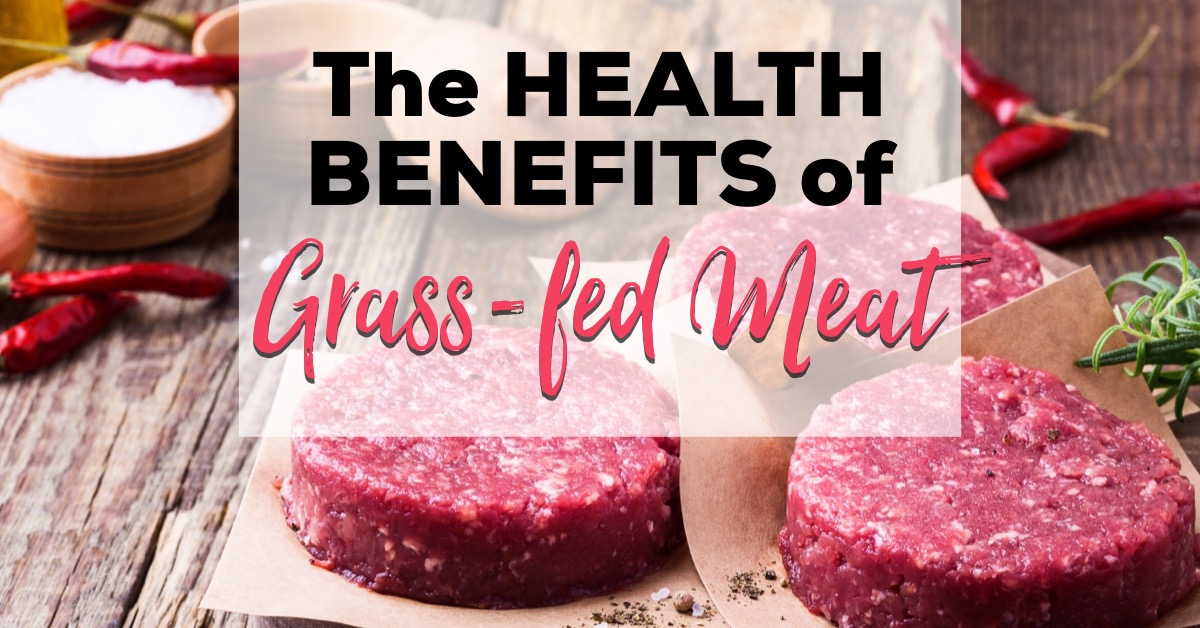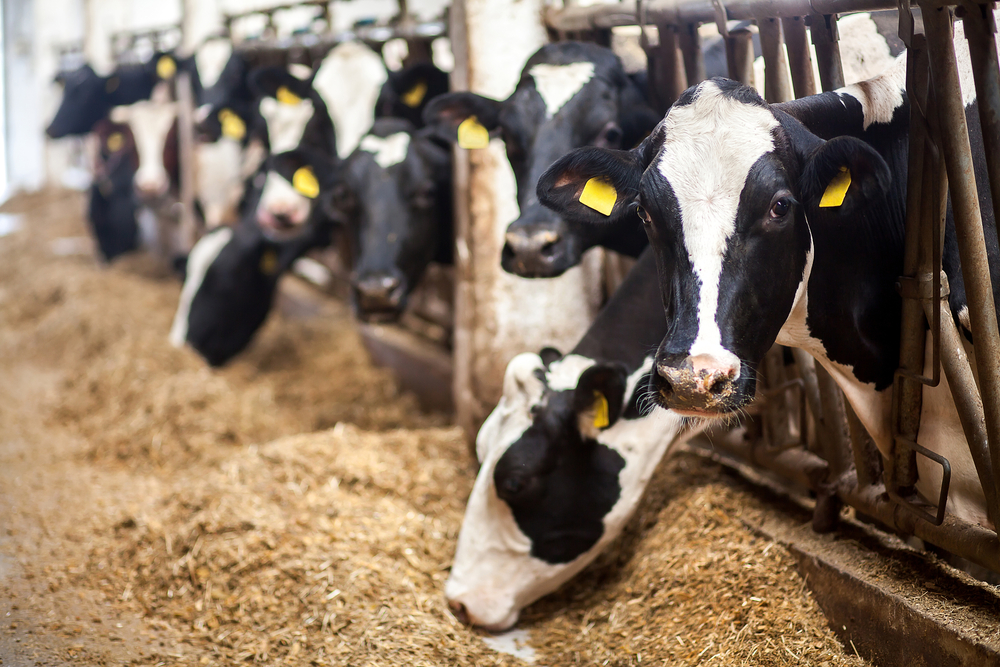
While most people who have embarked on the ancestral diet journey have come to love the idea that they can eat bacon and meat on a Paleo plan, it is important to note that not all meat is created equal.
The meat that is most widely available today is quite different than not only what the caveman were eating, but even from what our great-grandparents use to eat. Modern meat, which often comes from concentrated animal feed operations (CAFOs), not only differs in nutrient profile, but also in the livelihood of the actual animals.
The Horrors of Conventional Meat
If you have ever traveled abroad, you have likely experienced truly happy cows, in their natural habitat, grazing on grass, roaming freely in the pasture and soaking up all of the vitamin D a cow could ever hope for. They are not confined to overcrowded living spaces, with cement floors and lack of sunlight, which unfortunately is how most conventionally raised animals in the modern farming industry exist.
Despite the increased buzz around terms like “grass-fed” and “pasture-raised”, roughly 99 percent of beef in major retail supermarkets is from conventionally raised grain-fed cattle and from animals raised using conventional production practices. (1)
So how exactly is conventionally raised meat processed? Finding a true definition of conventional meat is tricky, but according to Beef Research, conventional beef, also called grain-fed or grain-finished, is from cattle that spend most of their lives grazing on grass in pastures but are “finished” for the last 120-200 days in a feeding operation where they receive scientifically formulated diets of grain, roughage, and other nutrient supplements. Conventionally raised cattle, regardless if they are on pasture or in feeding operations, can be given antimicrobials and hormones. (2,3)
The main difference with conventionally raised meat and grass-fed meat lies in the way the animals are raised. The USDA has a specific definition for natural and a separate and specific definition for organic beef, which does not always mean grass-fed.
The Environmental Protection Agency (EPA) defines Animal Feeding Operations (AFO) as agricultural enterprises where animals are kept and raised in confined situations. AFOs collect animals, feed, manure, and urine, as well as dead animals, and can conduct production on small land areas. The feed is brought to the animals, rather than the animals actually grazing or seeking real food and feed in pasture, fields, or open rangeland. To date, there are currently 450,000 AFOs in the United States. (4)
A concentrated animal feed operation (CAFO) is an animal feeding operation with more than one thousand animal units, which is defined as an animal equivalent of 1,000 pounds live weight and equates to:
- 1000 head of beef cattle
- 700 dairy cows
- 2500 swine weighing more than 55 pounds
- 125,000 broiler chickens
- 82,000 laying hens
Think of it as an over-crowded swimming pool on the hottest summer day! CAFO animals are on site for more than forty-five day during the year and CAFOs are also able to discharge manure and wastewater into any natural or man-made ditch, stream, or other waterway. (5)
You Eat What They Eat

The main purpose of CAFO style farming is to increase the volume of livestock production, with the high concentration of animals being the heart of the operation, packing as many animals as possible into a small space as possible.
Since the focus is to make the animals bigger in less time, so they can be slaughtered sooner and sold faster, the health of the animals’ diets is not a main concern. These animals are often fed genetically modified corn, soy, and other grains that would not occur in their natural habitat. This diet fattens animals quickly – and you, as well.
This unnatural force-feeding can sometimes make the animals sick, which then forces the farmers to give the animals antibiotics. When you eat antibiotic-treated meat, you’re also ingesting them, too. Seventy percent of the antibiotics produced in America are for livestock production and are given to farm animals. The US Center for Disease Control and Prevention has even claimed that the wide use of antibiotics in food-producing animals has contributed to the emergence of antibiotic-resistant bacteria in food-producing animals. (6) The amount of antibiotics sold to farmers and ranchers for use in animals raised for meat grew by 16 percent from 2009 to 2012. (7)
Under current law, pigs, chickens, and turkeys that have been fed rendered cattle can be rendered and fed back to cattle cow, while pig carcasses can be rendered and fed back to pigs, chicken carcasses can be rendered and fed back to chickens, and turkey carcass can be rendered and fed back to turkeys. Animal feed legally can also contain rendered roadkill, dead horses, and euthanized dogs and cats. By-product feed is also allowed, which includes candy, pasta, potato, and bakery waste. (8)
CAFO Health and Environmental Effects
While we are beginning to see that raising animals this way might not be beneficial for the actual animal, we are also finding that it’s not so great for the environment either. One of the biggest health concerns that stems from CAFO farming practices comes from the amount of manure these animals produce, which are full of contaminants. Their manure contains nitrogen and phosphorus, pathogens such as E. coli, growth hormones, antibiotics, chemicals used as additives to the manure or to clean equipment, animal blood, silage leachate from corn feed, and/or copper sulfate used in footbaths for cows. Large farms can produce over 1.6 million tons of waste per year, which is one and a half times the amount more than the annual sanitary waste produced by the entire city of Philadelphia, Pennsylvania! (9)
Emissions from manure that is degrading and livestock digestive processes produce air pollutants that can be the source of greenhouse gases, which has been said to contribute to global climate change. Groundwater can also become contaminated.
The imbalance of omega-3 to omega-6 fatty acids found in CAFO animals, as well as increased amounts of short fatty acids found in CAFO meat has been linked to cardiovascular disease and increased LDL cholesterol. (10) Myristic acid, which is found in greater amounts in conventionally raised farm animals, has been shown to have a greater total cholesterol raising effect, whereas stearic acid – found in grass-fed meat – had a neutral effect on the concentration of total serum cholesterol. CAFO livestock also have higher amounts of pro-inflammatory arachidonic acid and decreased concentrations of omega-3 fatty acids.
The Grass-Fed Difference

Grass-fed meat has a more favorable nutrient profile, including greater amounts of: (11,12)
- Omega-3 fatty acids
- Antioxidants
- Vitamin E
- Beta-carotene
- Vitamin C
- B vitamins, including B12, thiamin, and riboflavin
- Vitamin A
- Vitamin D
- Vitamin K
- Calcium
- Magnesium
- Potassium
- Glutathione
- Superoxide Dismutase
It is also free from added hormones and antibiotics. Meat from grass-fed cattle, sheep, and bison have been shown to be lower in total fat and also lower in total calories, with a six ounce steak from a grass-finished steer containing 100 fewer calories than a six ounce steak from a grain-fed steer. (13,14)
Grass-fed meat has two to four times more omega-3 fatty acids than grain-fed animals, which can help balance the ratio of omega 3s to omega 6s in our current diet. Grass-fed meat also is one of the richest sources of conjugated linoleic acid, or CLA, which has been shown to support metabolic and cellular health by helping to transport fatty acids into the mitochondria and boost immune health. It has even been shown to lower the risk of cancer. (15)
Grass-finished beef has higher proportions of cholesterol neutral stearic fatty acids and less cholesterol-elevating short chain fatty acids, such as myristic and palmitic acid.
The Bottom Line
Ideally you want to look for beef that is 100 percent grass-fed and grass-finished. You can look for a label from the American Grassfed Association or the American Food Alliance on the package, both of which have stricter requirements when it comes to grass-fed labeling.
Organic, grass-fed is going to be the gold standard, as grass-fed alone does not guarantee that there was no use of synthetic fertilizer or herbicides used on the grass. Talk to your local farmer to double check, as the organic certification process can get quite pricey and the farmer may very well be raising the cows organically but simply can’t afford the certification. Many times your local farmer allows the cows to be on open range, with access to pasture, sunlight, and natural grass.
